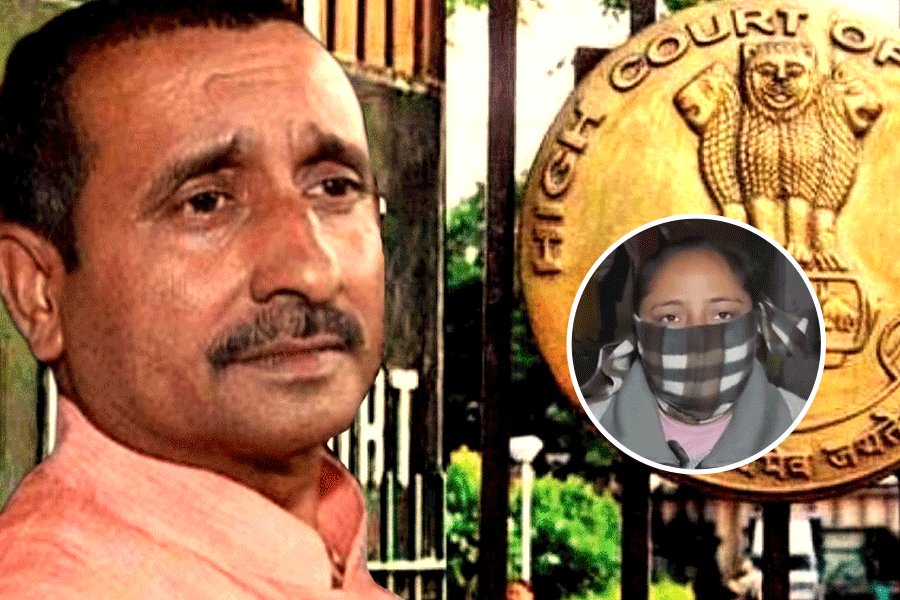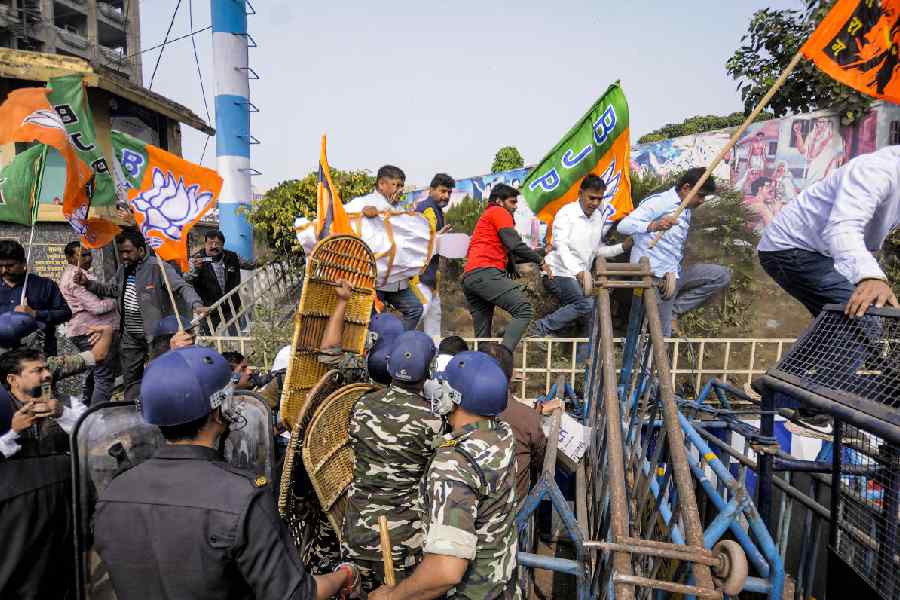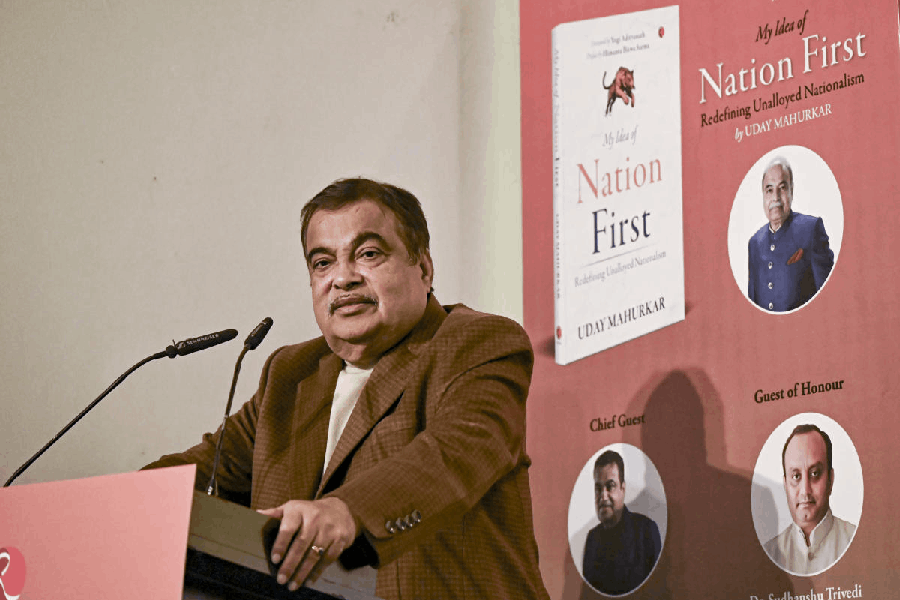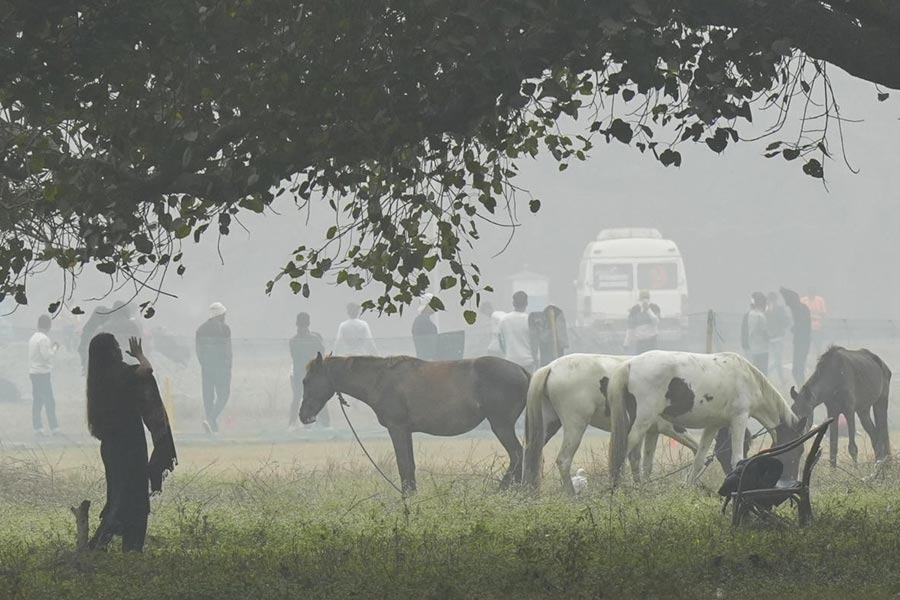DRAUPADI AMONG RAJPUTS, MUSLIMS AND DALITS: RETHINKING INDIA'S ORAL AND CLASSICAL EPICS
By Alf Hiltebeitel, Oxford, Rs 695
The Draupadi who recurs in Alf Hiltebeitel's study of India's oral and classical epics is in some ways very different from the Draupadi made familiar by the Sanskrit Mahabharata. Hiltebeitel's work here is in natural sequence to his two volumes on the Draupadi cult, particularly in South India. The investigation of the cult was meant to look at the classical epic from the cult's perspective - the action revolving around a heroine identical with the Hindu goddess. This is not particularly strange. Draupadi in the classical epic was believed to be an incarnation of Sri Devi. In the cult goddess, associations with the Brahmanical princess are less important than those with the virginal, clairvoyant and 'less moralizing' Draupadi known in Tamil popular culture, especially through the numerous Mahabharata ballads.
But Draupadi is not the sole focus of the present work. The book is an exploration of the ways in which regional martial oral epics, together with the Draupadi cult, rethink India's classical epics. Hiltebeitel's purpose is to examine 'living' folk interpretations of the epics that would question or even counter the views of the Mahabharata offered by the tradition of mid-19th century Western and classically oriented scholarship. He chooses four such martial epics for close study, the Tamil Elder Brothers Story, the Telugu Epic of Palnadu, the Rajasthani Pabuji, and the Hindi Alha. His stated reason for the choice is that these four are distinguished by their particularly strong reemplotment of either the Mahabharata or the Ramayana. Pabuji, for example, is a newly located tale of a martial ascetic hero and virgin heroine, who are associated with Lakshman and Surpanakha, reincarnated to try and complete their 'unfinished business' in the Ramayana.
It is typical of this open-ended form that the 'business' is never completed in any of the epics under discussion, even if it is between characters other than the hero and heroine figures. Hiltebeitel emphasizes the general tendency in these tales to pick up on loose ends in the classical epics. Instead of continuity, elucidation or direct grafting under local or regional conditions, folk creativity revels in discontinuity, disruption and the darker pool of ideas that underlies the classical epics. There is often the suggestion in the regional epics that a completion is taking place on another level, through the satisfaction of the mother goddess's thirst for blood and the creation of cult heroes. Draupadi's vow to leave her hair untied till it is dipped in the blood of Dushhashan is an originary moment. After all, it is only when Sita is abducted or Draupadi disrobed that all hell breaks loose. Yet the Mahabharata never sees the blood of the Pandavas. Reincarnations of these heroes in the regional epics die over and over again in failed battles to save their 'little kingdoms' and protect the goddess of the land.
Hiltebeitel's choice of regional epics, however, accomplishes a further purpose. The geographical range is essential in understanding the history of migrations, transmissions, diffusions and contributions, without which the richness of caste and community elements in the tales cannot be understood. The 'Rajput-Afghan' element, originating in the mobility of troopers from the west and north, and the Muslim configuration, particularly that of south Asian Nizari or Satpanth Ismaili Shiaism become part of the groundwork of tale-making in the regions. An obvious example of the fluidity of conception would be from a song of the 12th century Shams Pir or Samas Rishi, which describes Draupadi being rescued from her disgrace by 'him', meaning the Shah 'Ali, who has come as Krishna. He also becomes the Buddha to save Draupadi and the Pandavas. The goddess's traditional guardians, one of hybrid caste and one of hybrid faith, are just one of the intricate ways in which history, local society and culture are reflected in the epics. On a different plane, the failure of the heroes to protect their 'little kingdoms' from one another portends the sweeping Muslim invasions that are yet to come.
But range is most marked in the caste compositions of the regional epics, and this is far from accidental. The cults prevail among the higher castes, Rajputs and Dalits. Characters within the stories, as well as those who recite or perform the rituals and those who witness them, represent this complexity. The classical epic has many instances of caste ambiguity, rooted in mixed-caste birth, nurturing inconsistency or even change of caste-based professions. Vidur, Karna and Dronacharya are three obvious examples. In the regional epic, the Kshatriyas or the protectors of the land relate in different ways to the landed dominant caste, and again to hunters and artisans, while enjoying brotherhood bonds with 'lower caste ritual service companions', often distant kin, who are essential to the carrying out of the plot through disruption and sacrifice.
At each level, there is a woman who both protects and incites the men, and merges at some point with the mother goddess. The final tragedy is usually signposted by variants of a multicaste meal tinged with blood, as in the Palnadu, for example. At the same time, the pursuit is for an egalitarian mingling. As Pabuji leaves the battlefield for heaven, he asks the goddess, whose vessel of blood is now full, not to separate the blood of the different castes of those who died.
Hiltebeitel's study demolishes the idea of direct linear or lateral derivations, and unsettles a simple centre-to-periphery visualization. The complexity of the relationships between the regional and the classical epics and the restless historical, religious, mythological and literary interrelationships within which these epics took shape come through most clearly in this heavily researched work. This is especially valuable now, since Hiltebeitel's research falsifies all claims of a monolithic culture of the past.
 Wednesday, 24 December 2025
Wednesday, 24 December 2025









